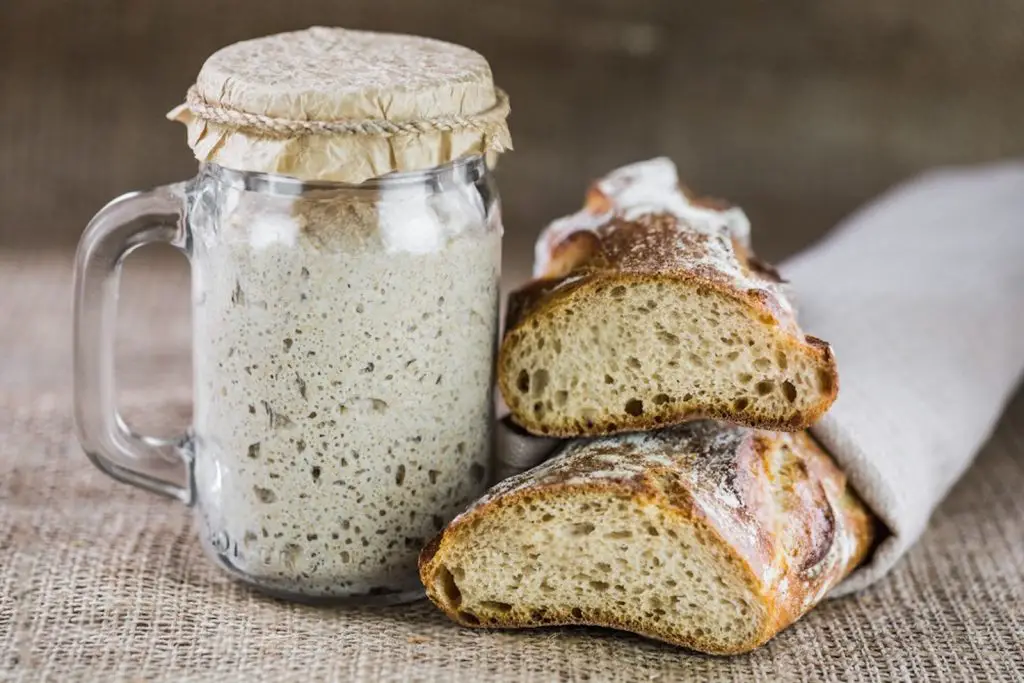
Queso, a savory and creamy cheese-based dip, has become a beloved staple in Mexican cuisine and a popular party appetizer around the world. Known for its smooth texture and indulgent flavors, queso offers a delightful blend of melted cheese, spices, and sometimes peppers or tomatoes, creating a delectable dipping sauce that perfectly complements tortilla chips, nachos, and a variety of snacks. Whether enjoyed as a comforting snack for movie nights or as a crowd-pleasing addition to gatherings and celebrations, queso adds a touch of fiesta to any occasion. However, when making queso in larger quantities or when you have leftover dip after a party, it may be challenging to consume it all before it starts to lose its creamy consistency or develop off-flavors.
Freezing queso becomes a practical and effective method to preserve its delightful taste and smooth texture, ensuring that each dip retains its creamy goodness and zesty kick, ready to elevate your snacking experiences with the essence of perfectly frozen queso, even when fresh dip is not readily available or when you wish to enjoy this cheesy delight at your convenience. In this guide, we will explore the best practices for freezing queso, allowing you to savor the richness of this delightful cheese-based dip and elevate your snacking repertoire with the essence of perfectly frozen queso, without the need for a fresh preparation or frequent visits to your favorite Mexican restaurant.
Here are the simple steps to freeze queso:
Step 1: Choose the Right Queso
Choosing the right type of queso is a critical step in the process of freezing it effectively. While most queso varieties can be frozen, some may fare better in terms of texture and flavor retention during the freezing and thawing process.
Fresh, homemade queso is generally considered to freeze better than store-bought options. This is because homemade queso often contains fewer preservatives and additives, making it more resilient to the freezing process. The absence of certain additives can prevent changes in texture and flavor that might occur in some store-bought queso varieties when frozen.
However, this doesn’t mean you can’t freeze store-bought queso successfully. Many commercial queso products are formulated with freezing in mind, and some may have specific instructions on the label for freezing and thawing. It’s essential to check the packaging or label for any freezing guidelines or recommendations provided by the manufacturer. Following these guidelines can help ensure that the queso maintains its quality and taste after freezing.
If you’re unsure about freezing a particular type of queso, it’s a good idea to do a small test freeze with a small portion before freezing larger quantities. This way, you can assess the results and decide whether it meets your expectations in terms of texture and taste after thawing.
Choosing the right queso for freezing is essential to ensure that you preserve its deliciousness and consistency. Homemade queso is generally a safer option, but some store-bought varieties can also freeze well if you follow any freezing guidelines provided. By making an informed choice, you can savor your favorite queso even when it’s out of season or when you have an excess amount that you want to enjoy later.
Step 2: Portion the Queso
After selecting the right type of queso for freezing, the next crucial step is to divide it into smaller, manageable portions. Portioning the queso before freezing offers several practical advantages and ensures a smoother freezing and thawing process.
- Easier thawing: By dividing the queso into smaller portions, you can thaw only the amount you need, avoiding unnecessary waste. Thawing a large batch of queso when you only want a small serving can lead to food spoilage and waste. With smaller portions, you have better control over the amount you thaw, reducing the risk of leftovers going to waste.
- Faster freezing: Smaller portions of queso freeze more quickly than a large container. Rapid freezing helps preserve the texture and flavor of the queso better, as it reduces the formation of ice crystals, which can affect the quality of the cheese dip. When frozen quickly, the queso maintains its creamy consistency, making it more enjoyable upon thawing.
- Versatile storage options: Portioning the queso allows you to use a variety of storage containers, depending on your needs and preferences. Small, airtight containers are ideal for freezing individual servings or smaller quantities of queso. Freezer-safe bags are great for sealing larger portions, and they also save space in the freezer. For those who prefer convenient, ready-to-use portions, ice cube trays can be used to freeze queso in bite-sized cubes.
When dividing the queso, consider your typical usage and the number of servings you’d like to thaw at once. This will help you determine the appropriate portion sizes. Additionally, label each container or bag with the amount of queso it contains to easily identify and select the right portion when needed.
Portioning the queso before freezing is a practical step that allows for easy thawing, reduces waste, and enables you to choose various storage options. By freezing queso in smaller quantities, you can enjoy its delectable taste and creamy texture with minimal effort whenever you desire.
Step 3: Cool the Queso
Properly cooling the queso before freezing is a critical step in the process to maintain its quality during storage. When queso is hot or warm, it releases moisture in the form of steam. If the queso is immediately transferred to a storage container and sealed while still hot, the trapped steam can create condensation inside the container as it cools down in the freezer. This condensation can lead to the formation of ice crystals, which can negatively impact the texture and taste of the queso upon thawing.
To avoid these issues, it’s essential to let the queso cool completely before proceeding with the freezing process. Cooling the queso allows excess steam to dissipate, preventing the buildup of moisture inside the storage container.
Patience is crucial during this step to ensure the best freezing results. Rushing to freeze the queso while it’s still warm can lead to undesirable changes in texture, such as becoming grainy or separating upon thawing. Moreover, the trapped moisture can lead to freezer burn, which results in dry and discolored patches on the queso’s surface.
To cool the queso properly, you can follow these steps:
- After preparing the queso, allow it to sit at room temperature for about 30 minutes to an hour. This allows the initial heat to escape and reduces the chances of condensation.
- Stir the queso occasionally while it cools to help release excess heat and distribute the temperature evenly throughout.
- Once the queso has reached room temperature, transfer it to the refrigerator to cool further. Depending on the quantity of queso, this cooling process may take a few hours or overnight.
- Avoid placing hot or warm queso directly into the freezer, as it can raise the freezer’s temperature and affect the surrounding frozen items.
Step 4: Package the Queso
Packaging the queso correctly is a crucial step in the freezing process to maintain its freshness, texture, and taste throughout its storage in the freezer. Proper packaging helps prevent freezer burn and preserves the queso’s quality, making sure it remains as delicious as when it was first prepared.
Here’s how to package the queso effectively:
- Choose suitable containers or freezer bags: Opt for containers or bags specifically designed for freezer use. These containers are made of materials that can withstand low temperatures without becoming brittle or cracking. Freezer-safe containers and bags are less permeable to air, which helps prevent the loss of moisture and the absorption of unwanted odors from the freezer.
- Ensure airtight sealing: Before filling the containers or bags with queso, ensure they are clean and dry. An airtight seal is essential to prevent air from entering the packaging, which can lead to freezer burn. Freezer burn occurs when moisture on the surface of the queso evaporates, leaving it dehydrated and discolored.
- Remove excess air: To achieve an airtight seal, remove as much air as possible from the containers or bags before sealing them. Air can promote freezer burn and negatively affect the texture and taste of the queso. You can use vacuum sealers or the “burping” method to remove excess air from freezer bags. With the “burping” method, partially seal the bag and then gently press down to release as much air as possible before fully sealing it.
- Portion according to needs: If you’ve divided the queso into smaller portions, make sure to use the appropriate size of containers or bags for each portion. This allows you to thaw only what you need, reducing waste and ensuring optimal quality.
By following these packaging guidelines, you can protect the queso from freezer burn and maintain its smooth and creamy texture. Properly packaged queso will remain a delightful treat, ready to be enjoyed whenever you decide to thaw it. With careful attention to packaging, you can preserve the delectable taste of queso, making it a satisfying addition to your culinary delights even after freezing.
Step 5: Label the Packages
Labeling each package of frozen queso with the freezing date is a crucial step to ensure proper food safety and quality control. Proper labeling allows you to keep track of how long the queso has been in the freezer and helps you use the oldest queso first, ensuring that you consume it within its optimal storage timeframe.
Here’s why labeling is essential:
- Food safety: While freezing queso can extend its shelf life, it is not indefinite. Queso, like any other food, has a limited storage life even in the freezer. Over time, the quality and taste of the queso may start to deteriorate. By labeling the packages with the freezing date, you can easily determine if the queso is still safe to consume and within its recommended storage duration.
- Quality control: Queso is best when consumed within a specific period after freezing. Beyond that time, it may lose its creamy texture, flavor, and overall appeal. By labeling each package with the freezing date, you can monitor the queso’s freshness and avoid using it past its prime.
- Rotation system: Labeling the packages with the freezing date establishes a simple rotation system for your frozen queso stock. When you add new queso to the freezer, place it behind the older packages, allowing you to use the oldest queso first. This practice prevents any queso from being forgotten and left unused for an extended period.
- Avoid waste: By keeping track of the freezing date, you can manage your queso stock efficiently, reducing the risk of accidentally letting it go to waste. Knowing when the queso was frozen allows you to plan your meals accordingly and avoid thawing more than you need.
When labeling the packages, use a waterproof marker or labels that adhere well to the container’s surface. Include the date of freezing, either with the specific day or month and year, whichever method is easier for you to follow.
Remember to check the recommended storage time for frozen queso. As a general guideline, queso can stay safe and maintain its best quality for about 2 to 3 months in the freezer. However, this timeframe may vary depending on the type of queso and the specific freezing conditions. Always trust your senses and judgment – if the queso shows signs of deterioration or freezer burn before the recommended time frame, it’s best to discard it.
Step 6: Freeze the Queso
Freezing the queso properly is crucial to preserve its texture and flavor for an extended period. To ensure the best results, follow these steps when freezing the well-packaged queso:
- Select the coldest part of the freezer: The coldest part of your freezer is typically located near the back or bottom. This area experiences the least temperature fluctuations and provides a more stable environment for freezing food. Choose this location to place the queso containers, as it will help maintain a consistent and low freezing temperature.
- Avoid stacking containers: When placing the queso containers in the freezer, avoid stacking them on top of each other during the freezing process. Stacking containers can impede proper airflow around each package, which may result in uneven freezing and could potentially lead to temperature variations within the queso. Uneven freezing may affect the texture and quality of the queso when thawed.
- Promote uniform freezing: Ensuring proper airflow around each queso container promotes uniform freezing. This means that each container will freeze at the same rate, helping to maintain the queso’s overall quality and preventing the development of ice crystals. Properly frozen queso retains its smooth and creamy consistency, making it a delight to enjoy once thawed.
- Freeze in a single layer: Whenever possible, arrange the queso containers in a single layer to facilitate better and faster freezing. If you have limited space in your freezer, you can place the containers side by side but leave enough space between them for proper airflow.
- Patience is key: Once you’ve placed the queso containers in the freezer, be patient and allow sufficient time for the queso to freeze completely. Depending on the container size and the quantity of queso, freezing times may vary. As a general guideline, it can take a few hours overnight for queso to freeze thoroughly.
By following these freezing guidelines, you can maintain the queso’s quality, ensuring it remains in top condition until you’re ready to thaw and enjoy it. Properly frozen queso retains its original taste and texture, allowing you to indulge in this savory cheese dip whenever the craving strikes.
How long can queso last in the freezer?
Queso can last in the freezer for about 2 to 3 months. Properly stored in airtight containers or freezer bags, it maintains its quality during this time. To enjoy the best taste and texture, it is advisable to consume the frozen queso within this recommended period.
Step 7: Thaw and Reheat
Thawing and reheating frozen queso correctly are essential steps to ensure food safety and maintain its delightful taste and texture. Improper thawing methods can lead to bacterial growth and compromise the quality of the queso. Follow these steps to thaw and reheat your frozen queso properly:
- Thawing in the refrigerator: The safest method to thaw frozen queso is in the refrigerator. Place the well-labeled queso container in the refrigerator and allow it to thaw slowly overnight or for several hours. Thawing in the refrigerator maintains a steady, cool temperature that discourages bacterial growth and helps preserve the queso’s quality.
- Avoid thawing at room temperature: Avoid thawing queso at room temperature or in warm water. These methods can promote the growth of harmful bacteria, as the queso may spend too much time in the temperature danger zone (40°F to 140°F or 4°C to 60°C). Bacterial growth can lead to foodborne illnesses, so it’s crucial to avoid these unsafe thawing methods.
- Be patient: Thawing queso in the refrigerator may take some time, depending on the container’s size and the queso’s thickness. Plan ahead and allow sufficient time for the queso to thaw gradually. If you need the queso quickly, you can use the microwave’s defrost setting, but be cautious not to overheat it during this process.
- Reheating the queso: Once the queso has thawed completely, it’s time to reheat it to your desired serving temperature. For best results, reheat the queso gently on the stovetop over low to medium heat or in the microwave using a microwave-safe dish. Stir the queso occasionally during reheating to ensure even heating and prevent scorching.
- Check the consistency: As you reheat the queso, keep an eye on its consistency. If the queso appears too thick, you can add a splash of milk or cream while stirring to achieve the desired creamy texture. Adjust the seasoning if necessary to enhance the flavor.
- Reheat in small portions: If you don’t plan to consume the entire batch of queso in one sitting, it’s better to reheat only the portion you need. This avoids unnecessary reheating and cooling, which can affect the queso’s overall quality over time.
By thawing and reheating your frozen queso correctly, you can enjoy its rich and creamy goodness just as if it were freshly made. Following these guidelines ensures food safety and helps maintain the queso’s original flavor and texture, allowing you to savor this delectable cheese dip with confidence.
Other related questions
Can you refreeze queso ?
Refreezing queso is generally not recommended as it can affect its texture and taste. Each freeze-thaw cycle can lead to changes in the moisture content, potentially resulting in a less desirable texture. To maintain the best quality, it’s advisable to use only the amount of queso needed and avoid refreezing any leftovers.
How do I know if the queso has gone bad after being frozen?
To determine if frozen queso has gone bad, look for signs of spoilage such as off-smell, mold growth, or an unusual texture. If the queso appears discolored, has an unpleasant odor, or shows signs of freezer burn, it may no longer be safe to consume. Trust your senses and use good judgment; if in doubt, discard the queso to avoid potential foodborne illnesses.
Is it possible to freeze queso with added ingredients like salsa or vegetables?
Yes, it is possible to freeze queso with added ingredients like salsa or vegetables. However, the texture and consistency of the salsa or vegetables may change after freezing and thawing. It is recommended to stir the queso well before freezing and choose ingredients that freeze well to maintain the best quality upon thawing.
Can you freeze queso made with dairy alternatives like almond milk or soy cheese?
Yes, you can freeze queso made with dairy alternatives like almond milk or soy cheese. However, it is important to note that the texture and flavor of the queso may change slightly upon thawing. To maintain the best quality, consider using stabilizers or thickeners in the queso before freezing and stir well after thawing to achieve a smoother consistency.
Are there any special considerations when freezing queso with added meat or seafood?
When freezing queso with added meat or seafood, several special considerations should be taken into account. Ensure that the meat or seafood is fully cooked before adding it to the queso to prevent any food safety issues upon thawing. Additionally, consider the texture and moisture content of the meat or seafood, as they may affect the queso’s consistency after freezing and thawing. Properly label the frozen queso with the type of added meat or seafood and the freezing date for easy identification and safe consumption.
Can you freeze queso that contains avocado or guacamole?
Freezing queso that contains avocado or guacamole is possible, but it is not recommended. Avocado has a high water content and can become mushy and discolored upon thawing, leading to a less desirable texture in the queso. The presence of guacamole may also cause the queso to separate or lose its creamy consistency during freezing and thawing. To maintain the best quality, it is advised to avoid freezing queso with avocado or guacamole and instead prepare fresh servings when needed.








